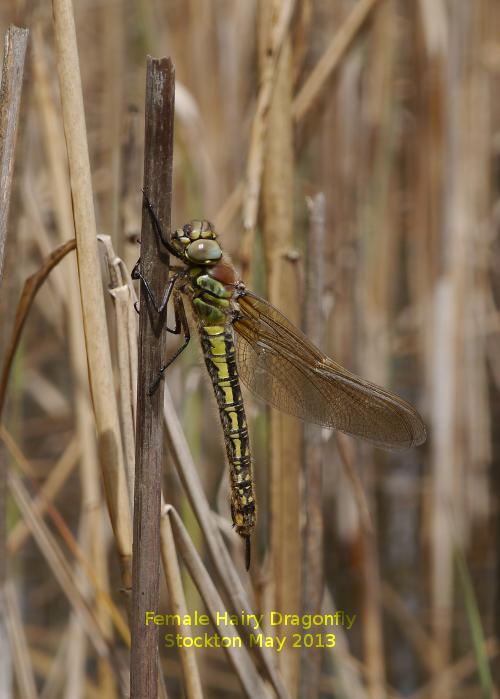|
|||||||||||||||||||||||||||||||||||||||||||||||||||||||||||||||||||||||||||||||||||||||||||||||||||||||||||||||||||||||||||||||||||||||||||||||||||||||||||||||||||||||||||||||||||||||||||||||||||||||||||||||||||||||||||||||||||||||||||||||||||||||||||||
Warwickshire Dragonfly Group - News pageTable of Earliest Flight dates November 28th - 2013 Year round up August 16th 2013
-
Late Summer August 6th & 7th 2013
- Lesser Emperor Dragonfly sightings July 27th 2013
-
Blythe Valley Business Park meeting July 6th 2013 -
Catherton
common field meeting May 27th 2013 -
A big emergence of Red-eyed Damselflies at Wormlieghton
Reservoir May 26th 2013 -
More Hairy Dragonflies at Stockton May 25th 2013 -
Marlcliff field meeting
& other sightings May 19th 2013 - More flying dragonflies May 16th 2013 - First flying Four-spotted Chaser of 2013 May 6th 2013 -
Large Red Damselflies at Snitterfield Bushes May 5th 2013 - Large Red Damselfly at Lighthorne Heath Table of Earliest Dates for 2013 Table of
Late Flying Dragonflies
If you have any later dates for 2013 or later times for previous years please let me have them. Back to page top.
If you have any earlier dates for 2013 or earlier times for
previous years please let me have them. November 28th 2013 - Year round up 2013 has been a year of ups and downs, or perhaps it should be
downs and ups. The very cold weather persisted well into spring
resulting in a late start to the flying season, see the first flights table. The contrast between
2011, that was very warm from the new year and into the spring, is
very marked. As this year progressed the weather improved greatly
giving the best summer for many years but even so the late
emergence of species continued. However, such good weather should
have given good reproductive success and so, hopefully, we can
look forward to good populations of dragonflies and damselflies
for the next year or two. The onset of cold weather finished the flight period for most
species fairly early - see the late flights
table. The Migrant Hawker and Common Darter hung on until
mid-November.
There were two notable vagrant sightings in the year: Mike
Inskip's remarkable second sighting in three years of Lesser
Emperor Dragonfly at Morton Bagot, see report the for August 6 & 7; and Red-veined Darter by
Jon Bowley on 14 July at Salford Priors, see the 25 July report. The rarer county species have had a mixed year. The Scarce Blue-tailed Damselfly
is still hanging on at its one breeding site but changes of
habitat have caused it to move to more suitable breeding habitat
there, see 25 July report. Hairy dragonfly did well at Stockton Quarry with a total of 18
exuvia collected but there were no reports of it at any other
sites in the county which is disappointing. Scarce Chaser was not seen this year despite careful searching.
Perhaps this is not a worry because the normal life cycle is two
years. It was first found in the county in 2010 and then
reoccurred in 2012 in larger numbers so we may expect to see them
next year - hopefully in still larger numbers. The status of Club-tailed Dragonfly on the Avon is more worrying.
In 2011 none were seen, only two adults were seen in 2012 and
those away from the river. In 2013 none were recorded. In the
years from 1998 until 2010 reasonably good numbers of adults were
recorded and in most years emergents and exuvia were found too.
The peak years for numbers were 2002 with about 40, 2004 with 15
and 2009 with 20. The effort made to find them has been similar
every year and so the drop in records is not a reflection of less
effort. It is hoped that the species is not going extinct in the
county and that next year will see a reverse the downward trend. The distribution maps for all species are up to date with this
year's record and show their current status in the county. Note
also that the accuracy of the Vice County borders on the maps is
improved and this has resulted in minor changes of the county
outline to that previously shown - this is particularly apparent
in 10k sq. SP14. August 17th
2013 - Late summer All our breeding species are now
flying (see erroneous July 25 report).
Migrant Hawker was first
sighted 28th July by Jon Bowley at Salford Priors. Kay
and Peter Reeve found three Migrant Hawker exuvia at Frankton Fish
Ponds on 3rd August another proof of county breeding of
the species. As with last year at this time, there are very good numbers of Brown Hawkers flying. The first flights table shows all the
earliest dates for the species and this year is noticeable later
than the earliest dates and, for most species, later than the
norm.
July 27th 2013 - Blythe Valley Business Park meeting The Blythe Valley Business Park (BVB) is tucked between the river
Blythe and the M42 motorway. While an ideal location for business
providing immediate access to the motorway system its attraction
to odonatists is not immediately obvious. What is though is the
Sustainable Drainage System (SuDS) which centres on a number of
pools, some of which appear ideal for breeding dragonflies. See http://www.susdrain.org/files/resources/briefings/suds_in_the_community.pdf
for more information about the BVB SuDS. Our aim was to see and
record the species and numbers there.
This year most species were late, some very late,but all most of *our county breeding
species are now flying helped, no doubt, by the hot spell - see
the first flights table for dates. One unusual vagrant has been reported. Jon Bowley saw a male Red-veined Darter
at Salford Priors on 14 July. He also reports the Scarce Blue-tailed Damselfly
is hanging on at its one county breeding site. He reported "They were inhabiting a narrow and
shallow sludgy stagnant drain. There was no sign around the main
site where the water level is now very high and the surrounding
semi-permanent puddles have recently dried up." They are
still managing to find micro-sites that suit their very demanding
breeding requirements but are needing to move about the site. Small Red-eyed
Damselfly and Ruddy
Darter are our last breeders to be reported flying, the
latter species almost a month later than its earliest ever date. May 27th
2013 - A big emergence
of Red-eyed Damselflies at Wormlieghton Reservoir On a monitoring transect at the Reservoir Kay and Peter Reeve
observed good numbers of Red-eyed
Damselflies emerging. Thirty-one were counted. This is the first record for the species this year. There
were also Common Blue-tail, Common Blue, Azure and Large-red
Damselflies present and only the Common Blue-tail in any numbers
of which 21 were counted.
The day was bright and warm and Ian Dove, Steve Stroud, Kay and
Peter Reeve set out to find Club-tailed Dragonfly and possibly
Scarce Chaser. Their hopes were high but not fulfilled. Good
numbers of Banded
Demoiselle were seen, most in a very immature state. The
only other species present was Large Red Damselfly.
To assuage frustration we went lower down the Avon to Eckington in
Worcestershire were a Club-tailed Dragonfly had been reported a
few days earlier. Here we managed to see a couple of newly emerged
Club-tails making their first flights and found a moribund female
Club-tail with wings that failed to expand. It may have attempted
to emerge in the very adverse weather the previous day and
provided a, sad, opportunity to see a specimen at close hand. Maggie Perris, John Harris and the RSPB Team found Banded Demoiselle on
the RSPB reserve at Middleton Lakes showing that the species is
emerging in both the north and south of the county. The warmer weather is, belatedly, bringing more dragonflies out.
Kay and Peter Reeve observed two emerging Hairy Dragonfly and
collected six exuvia for the species at Stockton Quarry. Common Blue Damselfly
and Blue-tailed Damselfly
were seen too. On the same day Jon Bowley recorded Azure Damselfly at
Salford Priors. May 16th
2013 - First flying Four-spotted Chaser of 2013 Jim Timms reports a Four-spottedChaser
at Bubbenhall Meadow. The first true dragonfly of 2013 flying in
the county. May 6th
2013 - Large Red Damselflies at Snitterfield Bushes A significant emergence of Large Red Damselflies
was observed taking place at the pond by Kay and Peter Reeve.
Sixteen newly emerged males were counted, there were no females. A
single fully coloured male was spotted some distance from the pond
- it must have emerged a day or two earlier. Kay and Peter Reeve spent a fruitless afternoon at Lighthorne Heath and were leaving when a Large Red Damselfly flew up from a pond and landed in the vegetation. It was a newly emerged male. This individual marks the start of a late flight season in Warwickshire - unless there are any unreported sighting. Please send any item for inclusion on the news page to: Peter Reeve, Co-ordinator WDG
Banner artwork by Joan Sharrett
| |||||||||||||||||||||||||||||||||||||||||||||||||||||||||||||||||||||||||||||||||||||||||||||||||||||||||||||||||||||||||||||||||||||||||||||||||||||||||||||||||||||||||||||||||||||||||||||||||||||||||||||||||||||||||||||||||||||||||||||||||||||||||||||
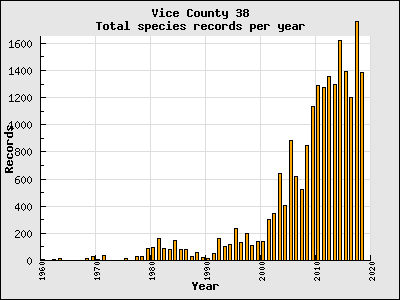 The
histogram shows the number of records received for 2013 (total
1062) is historically high though somewhat less than the previous
few years. The effort up to 2012 will contribute to the new
The
histogram shows the number of records received for 2013 (total
1062) is historically high though somewhat less than the previous
few years. The effort up to 2012 will contribute to the new 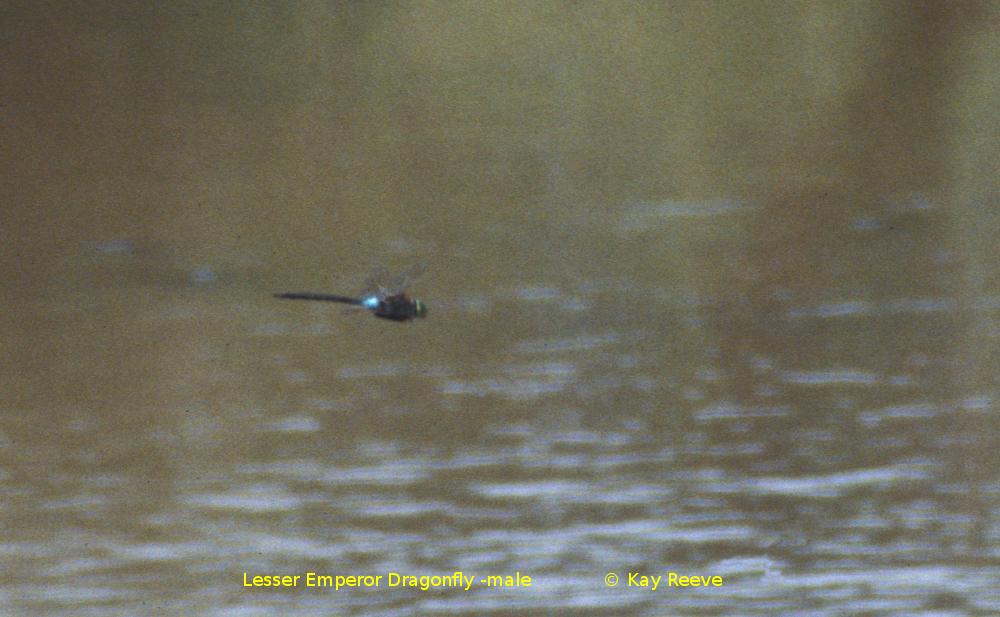

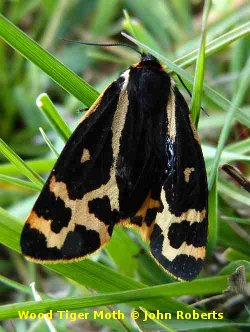
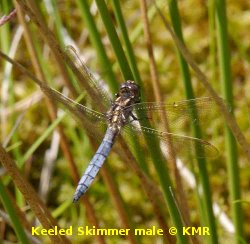
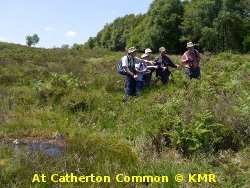 ed Dragonflies patrolling up and down the
(almost) stream. Once again Kay found an exuvia, this time
for the Golden-ringed Dragonfly. Other species seen were
Large Red Damselflies (about twenty) and single Common and
Azure Damselflies and a female Broad-bodied chaser.
ed Dragonflies patrolling up and down the
(almost) stream. Once again Kay found an exuvia, this time
for the Golden-ringed Dragonfly. Other species seen were
Large Red Damselflies (about twenty) and single Common and
Azure Damselflies and a female Broad-bodied chaser.